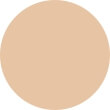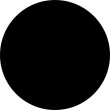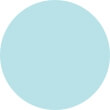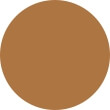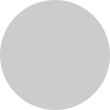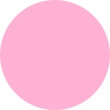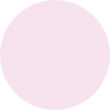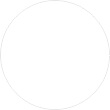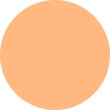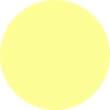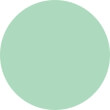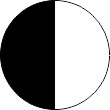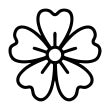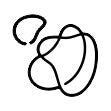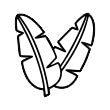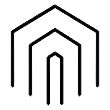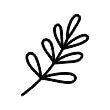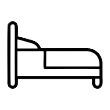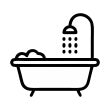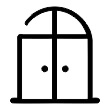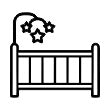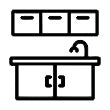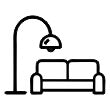Wallpapering Textured Walls: Tips And Tricks For Success
Are you dreaming of transforming your boring textured walls with a stylish wallpaper design? But are you worried that wallpapering is even possible on textured walls?
Don't worry! We've got you covered!
However, not all textured walls are created equal, and it's important to understand the different types of textures and how they can impact your wallpaper installation.
In this article, we'll share some techniques to smooth your textured walls and install wallpaper like a pro, ensuring that your wallpapers look stunning and have the added benefits of longevity and safety for your walls when it's time for removal.
Can You Wallpaper Over Textured Walls
Wallpaper and textured walls are unquestionably a lousy combination.
Trying to wallpaper over a bumpy, textured wall is like trying to paint a portrait on a potato - it's just not going to turn out well.
While plenty of methods exist to smooth out those pesky imperfections, taking the shortcut and slapping wallpaper over them is like asking for trouble. Not only will your wallpaper look like it was attacked by a pack of wild cats, but it'll also probably start peeling off and fall off abruptly.
So save yourself the headache and put in the extra effort to smooth out your walls before taking the wallpaper plunge.
A textured wall is a wall that is not completely smooth and contains imperfections. While some textures are more noticeable than others, such as a sand-like finish with pointed tips, others may be less obvious. For instance, a sanded wall may appear smooth at first glance but still have a sand-like finish. So, let's understand the different types of textures better.
Types Of Textured Walls And Their Challenges
There are various types of textured walls, but the most common are orange peel, popcorn, and knockdown textures.

- Orange Peel Texture: This texture is light and subtle, and non-woven wallpaper can cover it without any functional issues. Aesthetic issues are minimal, so wallpaper installation shouldn't be a problem.
- Popcorn Texture: This texture has rough and pointy edges that can show through the wallpaper and even damage it while trying to smooth out any bumps or clean it. Therefore, it can negatively affect the look of the wallpaper.
- Knockdown Texture: This texture has raised portions that may make the wallpaper look unnatural, especially when using a design like flat wood or wainscoting. Although this texture won't prevent the wallpaper from sticking, it can still affect the overall look.
- Other textures: There are some other textures, too, like exterior textures, light, palette knife etc.
To ensure the long-term safety of your wallpaper and wall, we advise smoothing out any textures by following the steps outlined below prior to installation.
Side Note: Possible Issues With Mold and Fungus Over Textured Walls
Suppose you're wallpapering a high humidity area like a laundry room or bathroom. In that case, textured walls may have little craters that can accumulate moisture and create a problematic environment for mold and fungus to grow. This can affect the durability of the wallpaper.
Use a paste that inhibits mold and mildew growth to avoid this issue. This won't be a concern if you're in a dry environment. However, the wall's texture may still affect the look of the wallpaper installation.
Do You Wanna Know How To Prepare Your Textured Walls
Get flawless wallpaper installation on textured walls with these easy steps to prepare your textured surface. Before anything else, let's tackle these two steps first!
Remove Hooks, Nails, And Light Switch Plates
Before beginning the preparation process, remove hooks, nails, or light switch plates from the wall. This will leave behind holes and raised areas that need to be filled in.
Fill In Holes & Sand Bumps
To create a smooth surface for wallpaper installation, use a spackle or a putty knife to fill with Joint compound in the holes and craters. Sand any bumps with fine-grit sandpaper or an electric sander. This step is crucial for proper wallpaper adhesion. Be sure to wear a mask, goggles, and a hat during this dusty process.
Let's Get Into Further Preparation
1.SMOOTH
Textures on the walls should be smoothed out with a putty knife by scraping, scratching or sanding the surfaces.
Use sandpaper with a grit range of 100-120 or an electric sander to smooth old walls.
However, this technique is only suitable for minor imperfections and assumes that the paint has been applied properly. It is advisable to fill larger holes or cracks with a powder filler before sanding to make them flush with the wall.
Consider following the below technique to smoothen major imperfections in your wall.
Skimming Technique
It is a finishing technique that involves applying a thin layer of joint compound or plaster over a wall or ceiling to create a smooth and even surface. Joint compound and plastering are two common materials used for skimming.
A joint compound is a pre-made mixture of gypsum dust and water specifically designed for finishing drywall seams and joints. It is easy to work with, dries quickly, and is more resistant to cracking and shrinkage compared to plaster. A joint compound is also more affordable and provides a more durable and long-lasting finish.
Conversely, plastering is a traditional technique involving applying a plaster mixture of water, sand, lime or gypsum to walls or ceilings. Plastering requires more skill and experience, takes longer to dry, and is more prone to cracking and shrinkage than joint compounds.
In both cases, skimming aims to achieve a smooth and even surface by applying a thin layer of material over the wall or ceiling. Skimming with joint compound or plastering can help hide imperfections, such as bumps or ridges, resulting in a flawless finish for wallpaper installation or painting. We recommend using a joint compound.
Joint Compound: A Plaster Alternative
Using a joint compound instead of plaster is a simpler and more convenient option for skimming walls.
Apply A Skim Coat Of Joint Compound
You can apply a skim coat of joint compound to the wall to achieve a perfectly smooth surface for wallpaper application.
A joint compound can be applied with a putty knife or trowel, providing a similar finish despite being thinner than plaster. Find out how to apply it below.
- Apply a thin layer of a joint compound onto the wall.
- Spread the compound evenly across the wall using a putty knife or trowel.
- Let the compound dry for approximately one hour.
- Sand down the surface with sandpaper.
- Continue these steps until you attain the intended outcome.
2. PAINT/ PRIMER
Paint your wall before installing wallpaper for the best results.
Paints On Regular Walls
Selecting the appropriate type of paint compatible with wallpaper adhesives is important to ensure successful wallpapering on regular walls. Not all types of paint are suitable for this purpose. Using paints with a smooth finish, such as eggshell, satin, gloss, or semi-gloss, is recommended. Preparing painted walls for wallpapering can be challenging as the paint can affect the wallpaper's adhesive properties.
There is a higher risk of the paint lifting off the wall when removing the wallpaper from matte or flat painted surfaces. For this reason, it is advisable to avoid using matte painted walls for wallpapering.
Paints On Drywall
Drywall surfaces are porous and can absorb moisture from paint, making achieving a smooth wallpaper finish challenging. The porous nature of drywall can cause the paint to be absorbed unevenly, forming bubbles, uneven adhesion, and an overall unappealing finish.
To avoid these issues, it is recommended to prime the drywall surface before painting it. An acrylic primer will create a smooth surface that allows the paint to adhere evenly. We also recommend using paints with a smooth finish, such as eggshell, satin, gloss, or semi-gloss, on drywalls.
Primers
If required, you can apply primer to protect the walls and allow for easy removal later.
Using a primer tinted in a similar color to the wallpaper can create a seamless look. Primer also ensures proper wallpaper adhesion to the walls while preventing moisture from causing mold and fungus growth in humid areas like bathrooms and kitchens.
Check out this link for more tips on overcoming wallpapering challenges on painted walls.
3. CLEAN THE WALL
Only a smooth, dry, dust-free clean surface will allow a peel-and-stick wallpaper/ prepasted or a traditional unpasted wallpaper to adhere to your wall correctly. Spend a few minutes cleaning the area of dust and dirt before continuing with the installation. Please refer to the link below for more detailed information about the cleaning process.
4. NOW YOU ARE READY TO INSTALL YOUR WALLPAPER
With all the preparation done, you're now ready to install your wallpaper that will last for years. Please visit the link below for detailed instructions on installing peel and stick/ prepasted or unpasted wallpaper.
